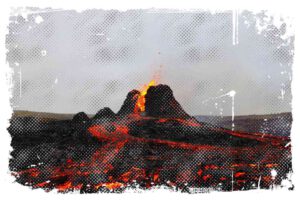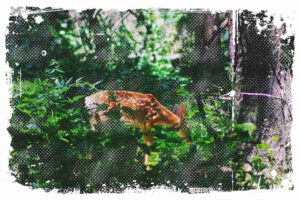As someone who has experience with wildlife, I can tell you that it’s important to be aware of the dangerous animals that live in Poland. Many people assume that our climate keeps us safe from deadly creatures, but this couldn’t be further from the truth. While we may not encounter these creatures on a daily basis, it’s important to understand that even small insects can pose a threat to our health and safety.

To help you stay informed, here are six of the most dangerous animals found in Poland that you should be aware of:
Brown Bear
Meeting a bear in the wild can be an extremely dangerous experience. These colossal animals can weigh up to 800 kilograms and tower over humans. Although bears tend to keep to themselves, their dwindling numbers have made them a rare sight in Poland.

They can occasionally be seen in areas such as the Tatras, Beskids, Bieszczady, Sudetes and Roztocze. Winter is the most dangerous time for bears – they are hungry and unpredictable after waking up from hibernation. In this state, they can become aggressive and even attack people, tearing them apart and devouring them. If you are confronted by a bear, it’s important to stay calm and back away slowly to safety.
↳ PRO TIP: Do you like traveling? Then before you buy any ticket or book an attraction, check if it's available in this worldwide Viator Database. You may save a lot of money and time. No need to thank me :)
What to Do When Spotting the Bear in Poland?
Never run, as this could trigger the bear’s predatory instincts. Throwing your pack on the ground may draw the bear’s attention away from you. Do not make eye contact or attempt to climb a tree, as bears are skilled climbers. If the bear appears to be watching you with its ears back, stay still and try to make yourself as small as possible by lying down on the ground and covering your neck and face with your hands.
In most cases, the bear will lose interest and move away. Remember to research the areas where bears live before you go on your outdoor adventures and avoid those areas to stay safe.
Zigzag Viper
Most people fear these creepy, hissing reptiles known as vipers. All vipers possess venom, but many are not dangerous to humans due to their biological conditions-they use their venom primarily to hunt small animals. The production of venom requires a great deal of energy, so vipers use their weapons sparingly and only bite as a last resort.
The venom aids in the digestion of prey and has a hemotoxic effect, damaging tissues and slowing metabolism. As a result, the bite of some species can be quite dangerous. The zigzag viper is the only poisonous reptile in Poland, living mainly in the lower parts of the country.

It avoids heights and usually does not venture above 2,000 meters above sea level. It can be found on the edges of forests, clearings, and meadows. The viper in Poland is not more than one meter long and has a dark gray zigzag line on its back. These creatures feed on small mammals and rodents and will not attack unless provoked.
What to Do If You Are Bitten by a Viper in Poland?
If you happen to be bitten by a viper, the poison can be fatal, especially to the oldest and youngest.
Fortunately, it can be reversed with the appropriate antitoxin. Symptoms often appear within minutes or hours and include pain, redness, swelling, necrosis, headache, nausea, vomiting, diarrhea, anxiety, hypotension, shortness of breath, and loss of consciousness. If you are bitten, the best first aid is to wash the wound with cold water and immobilize the limb below body level. You should also use ice packs.
Do not use cutting or bleeding techniques, tourniquets, or attempt to suction out the venom.
Spanish Fly
This small insect, no larger than 2 centimeters, is one of the most dangerous creatures that roam around Poland. How is this possible? It’s all thanks to cantharidin, a substance it produces as a defense mechanism. When this substance comes into contact with humans, it can cause irritation of the internal organs, and in large doses, it can even be fatal.

For this reason, it was often used as a poison. But more often, it was used as an aphrodisiac. It’s also known as the „Spanish fly” – a name that inspired the term used to describe something that gives an instant boost. It feeds on ash and is found in southern and central Europe, including Poland. The lethal dose for humans is between 10 and 30 milligrams, but even 0.1 milligrams can cause skin pain, redness and blisters.
Tick
You may not have noticed them, but they are always around us – those tiny, pesky ticks. They are usually found in tall grass, on the forest floor, and other places where the skin is thin, like under your knees. Although they can feed on human flesh, the bigger threat is what they leave behind. Ticks are known to carry Lyme disease, viral pneumonia, encephalitis, and other serious illnesses.

How To Remove a Tick From Your Body?
To remove a tick as quickly as possible, use tweezers to unscrew it – do not use margarine as it will not help. Time is of the essence, as a tick deprived of air will immediately release saliva that carries the virus. If you’ve been bitten and it’s been four days or less, you may be able to avoid tick-borne encephalitis by getting immunoglobulin, which is effective for four weeks.
Ticks can carry viruses that multiply in cells at the site of infection. After 5-17 or 28 days, you may experience cold-like symptoms that may go away on their own. These may be the only symptoms for some, but others may also experience high fever, dizziness, headache, vomiting, and loss of balance.
If you experience these more serious symptoms, you should seek medical attention. Unfortunately, there is no vaccine for Lyme disease, which is caused by 15-20% of tick bites. Symptoms can include a rash at the bite site, fever, and organ damage, and it is usually treated with antibiotics.
Wolves
You don’t have to worry about being attacked by wolves. The only time this might happen is if they’re desperate due to hunger, rabies, or other diseases; or if they’re a „wolf-dog hybrid” that has no fear of humans. Wolves are usually found in packs of up to 20 and can be quite dangerous when in groups. They are a protected species in Poland and it’s estimated that there are about 1,000 wolves roaming the country.

Wolves are the largest members of the dog family and can be found in many different habitats, from forests and plains to mountains and deserts. People often think of wolves as brave animals, but this isn’t always the case. Wolves tend to avoid unnecessary risks and will usually attack sick or weak animals. A strong kick from a healthy animal can be fatal.
Are Wolves Dangerous in Poland?
Despite the fact that wolves in Polish forests are surrounded by humans, these animals rarely have direct contact with us. This is a proof that predators do not like to be near us. However, if you find yourself in a situation where a wolf does not flee when it sees you, but stays and watches you, it does not mean that the animal is particularly bold or aggressive.
Wolves have a different way of seeing than humans (they can only see in black and white, and their vision isn’t as sharp), so they take more time to understand what they’re looking at. They also have a much better sense of smell, so they will usually wait until they can smell you before moving away. If you find yourself in this situation, just stay calm and wait for the wolf to leave.
Wild Boar
You should always keep your distance when encountering a boar. A female boar with her young is especially dangerous and should be avoided at all costs. It’s no laughing matter when you’re up against a 100-pound animal with razor-sharp teeth. Male boars can weigh up to three times as much, but are less likely to attack.

Even in suburban areas it is possible to see these animals during the day, so remember to take care when venturing outdoors. Encountering a wild boar in the woods does not have to be a risky situation as long as you stay alert and stay away.
What Should I Do When I See Boar in Poland?
First of all, don’t make any sudden movements. If you haven’t been recognized by the animal, just walk away calmly. However, if there has been a face-to-face encounter, the boar must not be disturbed. The most appropriate response is to „act like a tree,” i.e., just stand still. Attempting to scream or run could result in the animal attacking you.
The situation is much worse if you come across a sow with piglets – if frightened, it will become very hostile. Therefore, after encountering baby boars, it is strictly forbidden to touch them, approach them, let alone attack them. The protocol for encountering them is the same as for a single boar, but you need to be extra careful here.
References
- https://blaber.pl/lifestyle/najbardziej-niebezpieczne-zwierzeta-w-polsce/
- https://en.wikipedia.org/wiki/Wild_boar
- https://en.wikipedia.org/wiki/Viperidae




